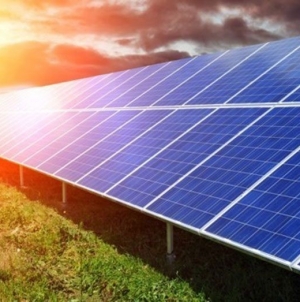Debt management crucial to Guyana, says IDB
CRITICAL to Guyana’s advancement as an oil-producing nation will be debt management and fiscal discipline, says the Inter-American Development Bank (IDB) in its fourth quarterly report which was released on Monday.
Guyana began receiving oil revenues in 2020, and to date has made three sales of one million barrels each.
According to the IDB, each of the sales was made at the Brent reference price at around the time of the sale, such that the first sale was made at US$55 per barrel, before oil prices plummeted in April.
The second sale was made at US$35 per barrel, and the third benefitted from recovering prices, and was made at approximately US$46 per barrel.
As of November 30, 2020, Guyana received three royalty payments totaling US$8.5 million, thereby contributing to a total balance of almost US$150 million (G$31.06 billion) being held in the Natural Resource Fund (NRF) in the Federal Reserve of New York.
Guyana is now estimated to have at least nine billion barrels in petroleum reserves. Since 2015, ExxonMobil has made 18 oil discoveries, the most recent of which was in September 2020.
“Given Guyana’s population of approximately 780,000, this suggests the level of reserves equates to 10,250 barrels per person, making Guyana one of richest countries in petroleum reserves per capita in the world. Despite these relatively large reserves, Guyana faces many hurdles and challenges in preparing itself to prudently manage this coming natural,” the IDB said.
Among the existing hurdles is the management of debt, something the IDB says Guyana has been doing “quite prudently” over the last two decades.
The Ministry of Finance is the key institution responsible for the formulation and implementation of the fiscal policy and management of public debt. The ministry’s general fiscal policy objectives are the maintenance of output stability and debt sustainability.
“From 1970 through the mid-1990s, Guyana was the most indebted country in the world, as measured by the ratio of nominal public debt to GDP (Figure 1). Guyana has since seen tremendous and sustained reductions in public debt levels, driven by, inter alia, debt relief initiatives such as the Heavily Indebted Poor Countries (HIPC) Initiative and the Multilateral Debt Relief Initiative, as well as by policy reforms,” the international financial institution says in its latest report.
Debt relief under the enhanced HIPC initiative was estimated at US$387 million, based on end-2002 data and parameters (IMF 2003).
In advising Guyana on the way forward, the IDB said: “Government authorities will have the alternative to use some of the new-found oil revenues to close budget financing gaps, and avoid debt accumulation and/or retire expensive outstanding public debt. Budget financing needs to be monitored, however, as it can erode savings and return the nation to a position of high indebtedness.”
It will be important for the Government to strengthen its fiscal framework, as well as other institutions in oil-and-gas governance and public financial management to improve the quality and efficiency of future public expenditure.
Emphasis, the IDB advised, should be placed on building human capacity, developing a comprehensive long-term fiscal sustainability framework, engaging in more economic analyses and forecasting, developing risk management capabilities, and spending oil-and-gas proceeds prudently and effectively, so that they have measurable positive impact on the welfare of the broadest segments of the population.
The financial institution further recommended that the Bank of Guyana implement an active communication strategy.
“It might consider publishing reports about its broad money growth targets, as well as reports explaining its monetary policy decisions in more detail, as well as the rationale behind them, strengthening its procedural and policy transparency,” the IDB said, adding: “The Bank might also consider strengthening its research capabilities by producing analytical work to support or validate the positions taken, or to evaluate likely impacts of external developments.”
According to the IDB, Guyana’s economy is on the verge of a historic transformation, owing to recent oil discoveries. In this context, maximising the benefits of faster growth and increased revenues will depend crucially on the financial sector.
As it is now, Guyana’s macroeconomic environment continues to remain stable, characterised by positive growth, low inflation, and a stable exchange rate.
The International Monetary Fund (IMF) has estimated real GDP growth for 2020 at 26.2 per cent. Overall price levels show significant stability, with the annual inflation rate averaging 1.8 per cent over the last three years. The inflation rate in 2019 was 2.1 per cent. The IMF projects the inflation rate to fall to 1.3 per cent in 2020, before picking up to 2.9 per cent in 2021.






















